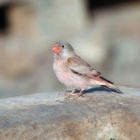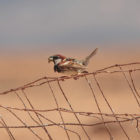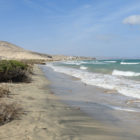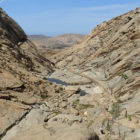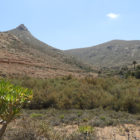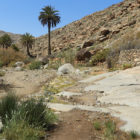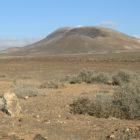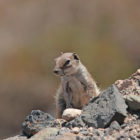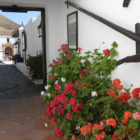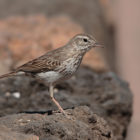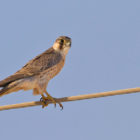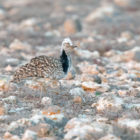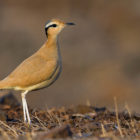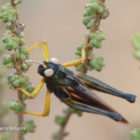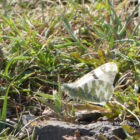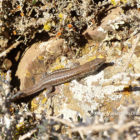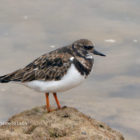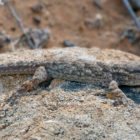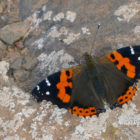Dates & Prices |
BOOK NOW |
Dates: 6th – 11th March 2024 (TBC)
Price: £1,275 Places available
Single Room Supplement: £150
Deposit: £150 per person
Price Includes: Accommodation, all meals, ground transport, services of guides & holiday report
Not Included: International travel, travel insurance, drinks & other personal items
Leader(s): Pau Lucio (second guide for larger group)
Group Size: Minimum 4 & maximum 12 guests + 1-2 leaders
Grade: Generally easy walking at a gentle pace.
Holiday Highlights
- Visit the island of Fuerteventura, one of the closest islands to the African continent
- A nice combination of endemic birds, both Macaronesian specialities and African species
- Birds to see include Trumpeter Finch, Cream-coloured Courser, Houbara Bustard, Fuerteventura Stonechat & lots more!
- We’ll also look for bonus butterflies, such as Greenish Black Tip, African Migrant, Canary Red Admiral, Plain Tiger & Monarch
- Dragonflies, including Lesser and Blue emperor, Epaulet skimmer and Red-veined darter
- Chance to observe other local & endemic flora & fauna
- Leisurely one centre tour, perfect for a relaxing holiday
- Led by local expert guide Pau Lucio
Join our new tour to the island of Fuerteventura this spring!
Your guides
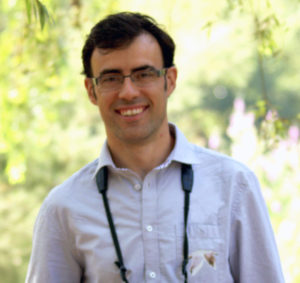
Pau Lucio is a professional wildlife guide in his native Spain and leads tours all over the country. He is also vice-president of the Association of Birding Guides of the Valencian Community. He was born in Gandia (Valencia) and has been interested in wildlife all his life. Pau studied Forest Engineering and got a MSc. in Environmental Science at the Universitat Politècnica de València. He has studied the flora and fauna in the area intensely and extensively. As a result, he has written papers about the ecology of the Mediterranean forest, Audouin’s migration patterns and also related to wing shape differences between northern and southern migratory warblers.
He is currently involved in conservation projects about the importance of Spanish wetlands for migrant birds. He has also set up different butterfly sanctuaries.
When Pau Lucio is not involved in planning trips, most of his time is taken up by studying the butterflies with the NGO Zerynthia (Butterfly Conservation Society). Furthermore, Pau also enjoys photographing wildlife and ringing birds
Join our new tour to the island of Fuerteventura this spring!
We’re delighted to offer a new tour to enjoy the birds and other wildlife of Fuerteventura!
A birding trip to the Canary Islands is a must for any keen naturalist in the Western Palearctic. These beautiful islands hold a nice combination of endemic birds, both Macaronesian specialities and African species. The isolation, the variety of habitats and the location have made these islands a paradise for wildlife lovers. In addition, there are large number of endemic plants, reptiles, and insects. Our relaxed itinerary will focus on the island of Fuerteventura, one of the closest islands to the African continent. In addition, we will have the opportunity to see some colourful dragonflies and butterflies, such as Greenish Black Tip, African Migrant, Canary Red Admiral, Plain Tiger and Monarch. Our accommodation will be in Hotel Rugama in Casillas del Ángel.
Day 1 and 2, March 6th and 7th. Tindaya
Once we arrive on the island, we will drive to our hotel. If times allows, we will go to Tindaya where will drive along the semi-desert to see some interesting bird species: Stone Curlew, Spanish Sparrow, Trumpeter Finch, Cream-coloured Courser and Barbary partridge. Furthermore, it will be our first chance to get the globally threatened Houbara Bustard, which has one of its main populations on Fuerteventura.
Other birds we will keep an eye on are Lesser Short-toed Larks, and Southern Grey Shrikes (Lanius meridionalis koenigii). Not far from there, Barbary Falcons occur. In addition, we might encounter the “Guirre” the local subspecies of Egyptian Vulture (Neophron percnopterus majorensis) and Berhelot’s Pipit.
Day 3 and 4. March 8th and 9th. Betancuria
Today we will visit the picturesque town of Betancuria and spend few hours exploring it. It is considered one of the most beautiful towns of Spain and was the first city to be founded in Canary Islands in 1834 and therefore the first capital of the archipelago. Later, we will take a trail where we can find some passerines, including migrants and residents such the endemic and scarce Fuerteventura Stonechat, subspecies of African Blue Tit and the Island Canary. We will also have the opportunity to get some dragonflies (Lesser and Blue emperor, Epaulet skimmer and Red-veined darter among others) and butterflies (resident population of Greenish Black Tip). During the second part of the day, we will drive towards Los Molinos looking for Black-bellied Sandgrouse, and Trumpeter Finch among other birds. We will visit some freshwater reservoirs which attracts many birds, both resident and migrant in this arid habitat. We hope to find Plain Swift and Laughing dove, which has arrived from the African continent. Some of the birds we might see in the reservoirs include the rare Marbled Duck, Ruddy Shelduck and waders.
Day 5, March 10th
The day will be spend visiting some good areas where in the past vagrants have been spotted. The Barranco de la Torre, the Alares pond might be of interest for Spectacled Warbler and Trumpeter Finch among others. We also spend the day looking for any target we have missed the previous days. Today we might see one of the many Barbary ground squirrels which were introduce from Morocco.
Day 6, March 11th
On our last morning in Fuerteventura, we may pay an early visit to Tindaya or any other birding spot in route to the airport.
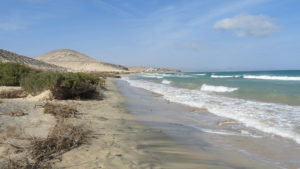
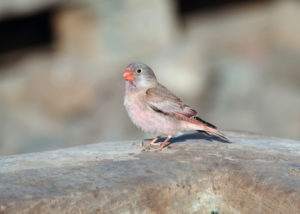
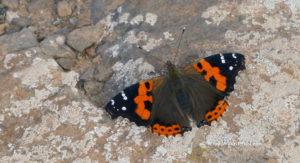
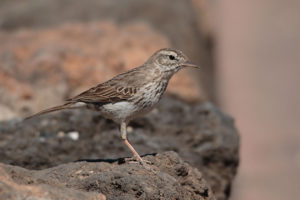
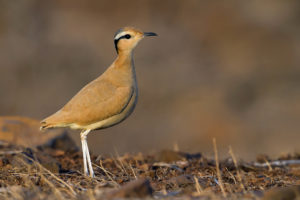
Day 1 and 2, March 6th and 7th. Tindaya
Once we arrive on the island, we will drive to our hotel. If times allows, we will go to Tindaya where will drive along the semi-desert to see some interesting bird species: Stone Curlew, Spanish Sparrow, Trumpeter Finch, Cream-coloured Courser and Barbary partridge. Furthermore, it will be our first chance to get the globally threatened Houbara Bustard, which has one of its main populations on Fuerteventura.
Other birds we will keep an eye on are Lesser Short-toed Larks, and Southern Grey Shrikes (Lanius meridionalis koenigii). Not far from there, Barbary Falcons occur. In addition, we might encounter the “Guirre” the local subspecies of Egyptian Vulture (Neophron percnopterus majorensis) and Berhelot’s Pipit.
Day 3 and 4. March 8th and 9th. Betancuria
Today we will visit the picturesque town of Betancuria and spend few hours exploring it. It is considered one of the most beautiful towns of Spain and was the first city to be founded in Canary Islands in 1834 and therefore the first capital of the archipelago. Later, we will take a trail where we can find some passerines, including migrants and residents such the endemic and scarce Fuerteventura Stonechat, subspecies of African Blue Tit and the Island Canary. We will also have the opportunity to get some dragonflies (Leaser and Blue emperor, Epaulet skimmer and Red-veined darter among others) and butterflies (resident population of Greenish Black Tip). During the second part of the day, we will drive towards Los Molinos looking for Black-bellied Sandgrouse, and Trumpeter Finch among other birds. We will visit some freshwater reservoirs which attracts many birds, both resident and migrant in this arid habitat. We hope to find Plain Swift and Laughing dove, which has arrived from the African continent. Some of the birds we might see in the reservoirs include the rare Marbled Duck, Ruddy Shelduck and waders.
Day 5, March 10th
The day will be spend visiting some good areas where in the past vagrants have been spotted. The Barranco de la Torre, the Alares pond might be of interest for Spectacled Warbler and Trumpeter Finch among others. We also spend the day looking for any target we have missed the previous days. Today we might see one of the many Barbary ground squirrels which were introduce from Morocco.
Day 6, March 11th
On our last morning in Fuerteventura, we may pay an early visit to Tindaya or any other birding spot in route to the airport.
- Greenish Black Tip
- Greenish Black Tip
New holiday so reviews to follow later
New holiday so reports to follow later




